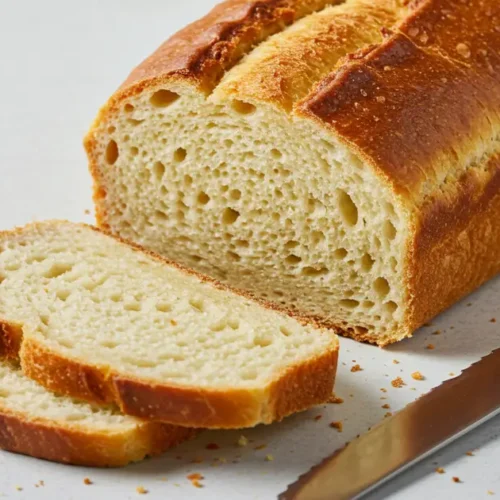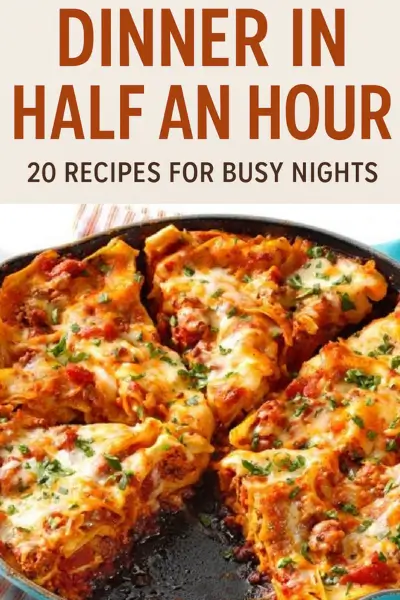No yeast bread is the perfect solution when you want fresh, homemade bread without the wait. With just a few simple ingredients, you can create a soft, delicious loaf in no time. Whether you’re new to baking or just looking for a quick recipe, this easy bread is perfect for any occasion.
Key Benefits
No yeast bread is the ultimate time-saver for anyone who loves fresh, homemade bread without the hassle. Here are the key benefits of making this quick and easy recipe:
- Quick and Simple: No need to wait for dough to rise—this bread comes together in under an hour, making it the perfect solution for busy days.
- No Yeast Required: Say goodbye to yeast and the waiting game! This bread uses baking powder and baking soda for rise, which means no long fermentation time.
- Perfect for Beginners: With just a few basic ingredients and simple steps, this recipe is ideal for those who are new to baking or looking for a beginner-friendly project.
- Customizable: You can easily make this bread your own by adding herbs, cheese, or sweet ingredients like raisins or cinnamon, making it a versatile recipe for any occasion.
- Soft and Fluffy Texture: The texture of no yeast bread is surprisingly soft and light, even without yeast. You’ll love how it comes out fresh, warm, and perfect for spreading butter or your favorite jam.
- Affordable Ingredients: With basic pantry staples like flour, baking powder, and milk, this recipe is budget-friendly and can be made anytime you’re craving a homemade treat.

Ingredients for no yeast bread
All-purpose flour – The base for the bread, providing structure and texture. Avoid substituting with whole wheat flour, as it makes the bread denser.
Baking powder – Necessary for the rise of the bread. It cannot be swapped with baking soda, as they serve different purposes.
Baking soda – Works with baking powder for a light texture. It’s crucial for balancing the acidity in the dough.
Sugar – Adds sweetness and helps the bread rise. It’s essential for texture and flavor.
Milk – Whole milk gives the bread the best moisture. Using lower-fat milk may result in a drier loaf.
Melted butter – Provides moisture and flavor. It can be substituted with oils, but butter offers the best texture and taste.
Instructions for No Yeast Bread
Now that you have all your ingredients ready, it’s time to make this no yeast bread come to life! Follow these easy steps to create a soft, delicious loaf:
Preheat the oven: Heat the oven to 375°F (190°C) and line a baking sheet with parchment paper to prevent sticking.
Mix the dry ingredients: In a bowl, whisk together flour, baking powder, baking soda, salt, and sugar.
Add the wet ingredients: Pour in the milk and melted butter, then mix until a dough forms. Adjust with milk or flour if needed.
Knead the dough: Gently knead the dough on a floured surface for 1-2 minutes until smooth.
Shape the dough: Shape the dough into a round or oval loaf.
Bake: Place on the baking sheet and bake for 25-30 minutes or until golden brown and a toothpick comes out clean.
Cool and Enjoy: Let the bread cool for 10 minutes before slicing.
Pro Tips for no yeast Bread
To ensure your no yeast bread turns out perfectly every time, here are some pro tips to elevate your baking game:
Measure your flour properly: Too much flour can make your bread dense. Use the spoon-and-level method to measure your flour. Simply spoon the flour into your measuring cup and level it off with a knife for the perfect amount.
Don’t overmix the dough: Once the wet ingredients are added, mix until just combined. Overmixing can lead to a tough loaf, so be gentle and avoid overworking the dough.
Adjust the dough consistency: If the dough feels too dry, add a splash more milk. If it’s too sticky, sprinkle in a little more flour, but aim for a slightly sticky dough—it will make the bread softer.
Check the bread early: Oven temperatures can vary, so start checking your bread at the 25-minute mark. If it’s golden brown and a toothpick comes out clean, it’s ready to come out!
Let it cool: Resist the urge to cut into your fresh bread right away. Letting it cool for at least 10 minutes helps the structure set and ensures clean slices.
Flavor additions: For a twist, try adding a handful of herbs like rosemary or thyme for a savory version. Or, mix in a teaspoon of cinnamon and a handful of raisins for a sweet treat!
Variations
The beauty of no yeast bread lies in its versatility. You can easily customize it to suit your taste or make it unique for different occasions. Here are a few fun variations to try:
Herb-Infused Bread: Add a tablespoon of finely chopped rosemary, thyme, or oregano to the dough for a fragrant, savory loaf. This variation pairs beautifully with soups and stews or as a side to pasta dishes.
Cheese and Garlic Bread: Mix 1/2 cup of grated cheddar or parmesan cheese and a couple of minced garlic cloves into the dough. The cheese will melt into the bread as it bakes, creating a flavorful, cheesy center.
Sweet Cinnamon Bread: For a slightly sweet twist, add 1 teaspoon of ground cinnamon and 2 tablespoons of sugar to the dough. You can even sprinkle a little extra cinnamon-sugar on top before baking for a sweet, crunchy topping.
Serving Suggestions for No Yeast Bread
This no yeast bread is as versatile as it is delicious. Here are some serving ideas that will elevate your loaf and make it the star of your meal:
Perfect for Breakfast: Slice your freshly baked bread and toast it lightly. Spread a generous amount of butter, jam, or honey on top. You can also add a dollop of cream cheese for a rich and tangy twist.
Pair with Soups and Stews: The bread’s soft, fluffy texture makes it the perfect companion for hearty soups or stews. Tear off a chunk and dip it into your favorite vegetable, tomato, or chicken soup for a cozy meal.
As a Side for Salads: Serve the bread alongside a fresh salad. It complements greens, vinaigrettes, and creamy dressings wonderfully. You can also use it to mop up any extra dressing or sauce on your plate.
Grilled Cheese Sandwiches: Make your favorite grilled cheese sandwich with this no-yeast bread. Its sturdy yet soft texture holds up well when grilled and pairs perfectly with melted cheese.
More Bread recipes you will love!
FAQs about no yeast bread
Here are some frequently asked questions to help you perfect your no yeast bread recipe:
Can I make this bread without baking soda?
Baking soda is essential for helping the bread rise without yeast. If you don’t have it on hand, you can substitute it with baking powder, but the texture may be slightly different. The bread might be a bit denser, but it is still delicious.
Can I add other flavorings, like nuts or dried fruit?
Absolutely! No yeast bread is incredibly versatile. Add a handful of chopped nuts like walnuts or pecans, or mix in dried fruit such as cranberries or raisins for a unique twist. Just be sure to fold them in gently to avoid overworking the dough.
What if my dough is too dry or too sticky?
If your dough feels too dry, add a splash of milk or water, a little at a time, until it reaches the right consistency. If it’s too sticky, sprinkle in a bit more flour. The dough should be soft and slightly tacky but not overly wet or too firm.
Can I make this bread gluten-free?
Yes, you can! Simply swap the regular flour with a gluten-free all-purpose flour blend. Make sure the blend contains xanthan gum or add it yourself to help the bread hold its shape. You might need to adjust the liquid slightly to get the right dough consistency.

no yeast bread
Ingredients
- 2 cups all-purpose flour
- 1 tablespoon baking powder
- 1 teaspoon baking soda
- 1/2 teaspoon salt
- 1 tablespoon sugar
- 3/4 cup milk
- 1/4 cup melted butter
Instructions
- Preheat the oven: Set your oven to 375°F (190°C) and line a baking sheet with parchment paper. This ensures the bread doesn’t stick and helps it bake evenly.
- Mix the dry ingredients: In a large bowl, whisk together the flour, baking powder, baking soda, salt, and sugar. Make sure everything is well-combined to ensure the bread rises properly.
- Add the wet ingredients: Pour in the milk and melted butter. Stir everything together until a dough forms. The dough should be slightly sticky but easy to handle. If it’s too dry, add a splash of milk; if it’s too wet, add a little more flour.
- Knead the dough: Turn the dough out onto a floured surface and knead gently for about 1-2 minutes. You don’t need to knead it too much—just enough to bring everything together and form a smooth ball.
- Shape the dough: Shape the dough into a round or oval loaf. You can make it as rustic as you like or use a loaf pan for a more traditional shape.
- Bake: Place the dough on your prepared baking sheet and bake for 25-30 minutes or until the top is golden brown and a toothpick inserted into the center comes out clean. The bread should sound hollow when tapped on the bottom.
- Cool and Enjoy: Let the bread cool on a wire rack for about 10 minutes before slicing. This helps it set and makes slicing easier.
Send me this recipe!
Just enter your email below and get it sent straight to your inbox!


